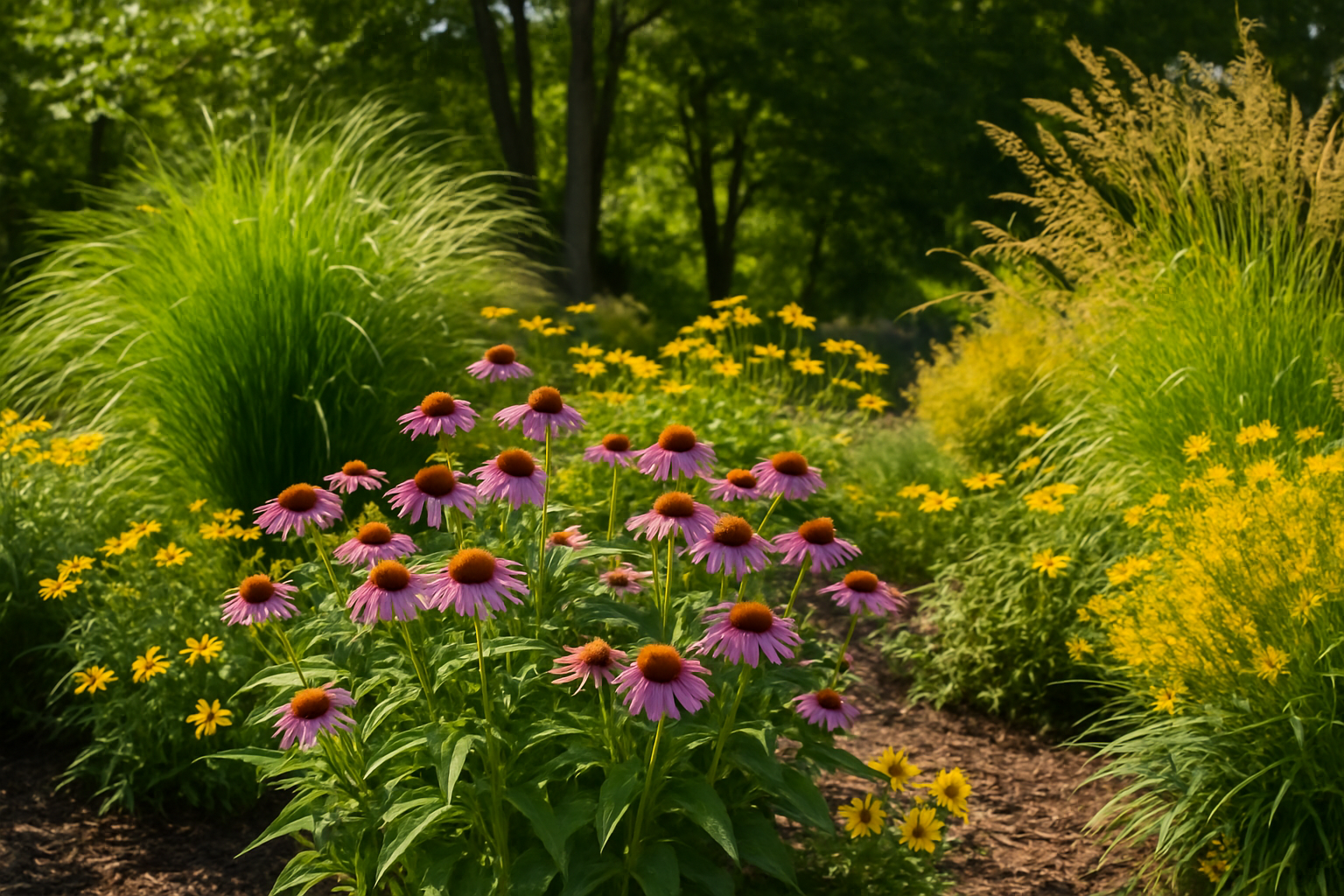How to Keep Your Lawn Healthy During Tennessee Winters

How to Keep Your Lawn Healthy During Tennessee Winters
Introduction
Winters in Tennessee may not be as harsh as those up north, but they can still take a toll on your lawn. Between cold snaps, frosty mornings, and fluctuating temperatures, your grass has to work hard just to stay alive until spring. The good news? With the right preparation and maintenance, you can keep your lawn green, healthy, and ready to thrive once the warmer months return.
At Dodson Designs, we know how much pride East Tennessee homeowners take in their landscapes. A healthy lawn not only enhances curb appeal—it sets the foundation for a lush, vibrant yard all year long. Whether you have a newly installed landscape or a well-established lawn, the following winter care steps can make all the difference.
1. Know Your Grass Type
Before doing anything else, it’s important to understand the kind of grass growing in your yard. Tennessee lawns typically fall into one of two categories: cool-season or warm-season grasses.
- Cool-season grasses (like fescue and ryegrass) stay active longer into the cold months and may even grow a bit during mild winter days.
- Warm-season grasses (such as Bermuda, Zoysia, and Centipede) go dormant in winter, turning tan or brown until spring.
Knowing your grass type helps you adjust watering, mowing, and fertilizing schedules properly. For example:
- You should aerate and overseed cool-season lawns in fall to strengthen their roots before winter.
- Warm-season lawns benefit from late-summer feeding and reduced foot traffic as they enter dormancy.
If you’re not sure which grass type you have, Dodson Designs can help identify it and create a seasonal maintenance plan tailored to your landscape.
2. Aerate and Overseed Before Cold Sets In
One of the most effective ways to prepare your lawn for Tennessee’s winter is through aeration and overseeding—ideally done in early to mid-fall.
Why Aeration Matters:
Over time, soil becomes compacted from foot traffic, lawn equipment, and natural settling. Compacted soil prevents oxygen, water, and nutrients from reaching grass roots. Aeration opens small holes in the ground, allowing the soil to “breathe.”
Why Overseeding Helps:
Overseeding after aeration allows new grass seed to fall directly into the soil, encouraging thicker, more resilient growth. This is especially beneficial for fescue lawns that may thin out during hot summers.
When winter arrives, those new roots are already established—making your lawn stronger and better prepared for cold weather.
3. Fertilize at the Right Time
Many homeowners think spring is the best time to fertilize—but for Tennessee lawns, fall and early winter are the real sweet spots.
Applying a slow-release fertilizer in late fall helps feed your grass during dormancy. Even when it looks like your lawn isn’t growing, the roots are still active underground. Fertilizer strengthens those roots, stores energy, and prepares the lawn to green up quickly once temperatures rise again.
Here’s a quick guide:
- Cool-season grasses: Fertilize around October–November before consistent frost.
- Warm-season grasses: Stop fertilizing by early fall, allowing the grass to enter dormancy naturally.
Avoid applying fertilizer right before a hard freeze or during heavy rain, as it may wash away before it can be absorbed.
4. Adjust Your Mowing Routine
As temperatures drop, your grass growth slows down—but that doesn’t mean you should skip mowing altogether. Instead, you’ll want to gradually lower your mowing height during the fall season.
Cutting grass too short can expose roots to frost, while leaving it too tall can encourage disease or matting under snow and ice.
The ideal height:
- Fescue and Ryegrass: 2.5–3 inches
- Bermuda and Zoysia: 1.5–2 inches
Continue mowing until your lawn stops growing entirely. Then, clean and store your mower properly to prevent rust during the off-season.
5. Clear Fallen Leaves and Debris
Fallen leaves might look beautiful scattered across your yard, but they can quickly smother your grass. When leaves pile up, they block sunlight, trap moisture, and create a breeding ground for mold and lawn disease.
Make it a habit to rake or mulch leaves weekly throughout late fall. Mulching them with your mower is actually beneficial—shredded leaves act as a light organic fertilizer, returning nutrients to the soil.
Additionally, remove:
- Sticks, branches, and heavy debris
- Children’s toys or lawn furniture that might sit on the grass all winter
Even light objects left on the lawn too long can flatten and kill grass beneath them.
6. Water Strategically
Tennessee winters bring unpredictable rainfall. Some years, your lawn will stay naturally hydrated. Other times, especially during dry cold spells, it might need a little help.
Grass still requires moisture during dormancy to stay healthy. If there hasn’t been measurable rainfall for more than two weeks, give your lawn a deep watering—as long as the ground isn’t frozen.
Pro tip:
Water mid-day on warmer days when temperatures are above 40°F. This allows the water to soak in before nighttime temperatures drop below freezing.
7. Protect Against Foot Traffic
During winter dormancy, your grass is more fragile. Walking repeatedly on frosted or dormant grass can damage blades and compact soil, creating unsightly bare spots come spring.
Try to:
- Keep foot traffic limited, especially after frost.
- Use pathways or stepping stones for access points.
- Avoid parking vehicles or storing heavy items on the lawn.
If your yard doubles as a gathering space year-round, Dodson Designs can help install decorative walkways or stone paths that protect your lawn while adding aesthetic value.
8. Manage Winter Weeds
Just because your grass is dormant doesn’t mean weeds take a break. In fact, winter is when broadleaf weeds—like henbit and chickweed—tend to thrive in Tennessee lawns.
Apply a pre-emergent herbicide in late fall to prevent these weeds from sprouting. If they’ve already appeared, use a selective post-emergent treatment that targets weeds without harming grass roots.
For best results, always follow product directions closely or contact a landscape professional like Dodson Designs to ensure proper timing and application.
9. Prepare for Frost and Freezes
Knoxville winters often bring surprise frost events. While grass can typically handle mild frost, repeated freezes without protection can stress the lawn—especially newly seeded areas.
Here’s how to reduce frost damage:
- Avoid walking on frosty grass. The blades are brittle and easily crushed.
- Keep mowing blades sharp to prevent tearing.
- Use natural windbreaks (like shrubs or ornamental grasses) to protect exposed areas from harsh winds.
If you’ve recently planted new sod or seed, consider covering sensitive sections with breathable landscape fabric during cold snaps.
10. Continue Basic Maintenance Through Winter
Even though lawn growth slows down, small maintenance tasks go a long way. Every few weeks, do a quick check-up:
- Remove sticks and leaves.
- Look for signs of pests or mold.
- Make sure irrigation systems are turned off and drained properly to avoid frozen pipes.
This kind of light attention prevents issues from compounding and saves you costly repairs in spring.
11. Plan for Spring During Winter
Winter is actually the perfect time to plan your next landscaping project. Whether you’re considering new flower beds, a patio installation, or a complete backyard redesign, getting a head start means you’ll be ready to break ground as soon as the weather warms up.
Dodson Designs helps Knoxville homeowners visualize and plan outdoor spaces with professional design renderings. From low-maintenance landscapes to elegant outdoor living areas, winter is an ideal time to start dreaming and budgeting.
12. Bonus Tips for Tennessee Homeowners
Because East Tennessee has such a unique climate—humid summers and mild, wet winters—it’s worth keeping a few region-specific points in mind:
- Test your soil every 2–3 years to check for pH balance. Tennessee soil tends to be slightly acidic, and lime treatments can help maintain a healthy balance.
- Trim trees and shrubs during winter dormancy to promote strong spring growth.
- Add mulch around garden beds to insulate roots and retain moisture.
13. When to Call a Professional
While many winter lawn care tasks can be handled DIY, there are times when professional help saves time, money, and guesswork. Consider hiring a landscape expert if:
- You’re unsure how to handle fertilization or herbicide timing.
- You notice persistent drainage or soil compaction issues.
- You’re ready to upgrade your landscape with design-driven features like stone walkways, retaining walls, or new planting beds.
At Dodson Designs, we take a holistic approach to lawn and landscape health. We don’t just treat what’s visible—we design systems that help your property thrive all year long.
Conclusion
Tennessee winters may not be brutal, but they still challenge your lawn in subtle ways. By preparing early, maintaining smart habits, and protecting your grass through the colder months, you’ll enjoy a lush, green lawn that rebounds beautifully in spring.
If you’d rather spend your winter relaxing and leave the work to the pros, Dodson Designs is here to help. From fall aeration and fertilization to custom landscape planning, our team knows exactly how to protect your investment—season after season.




